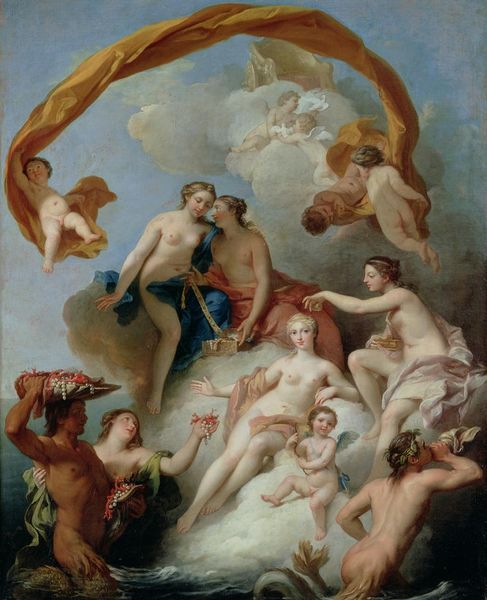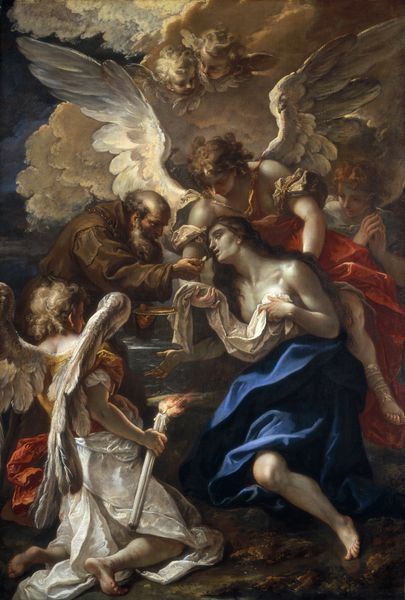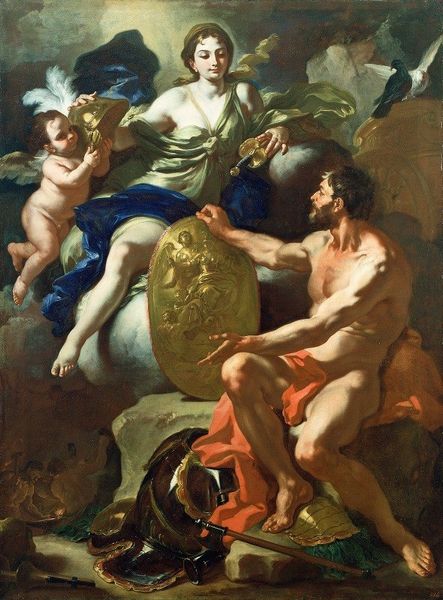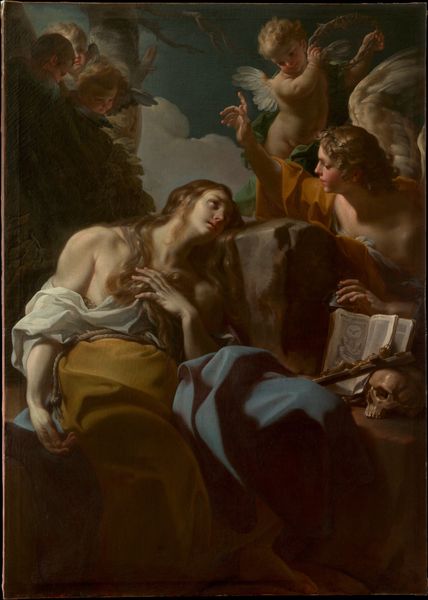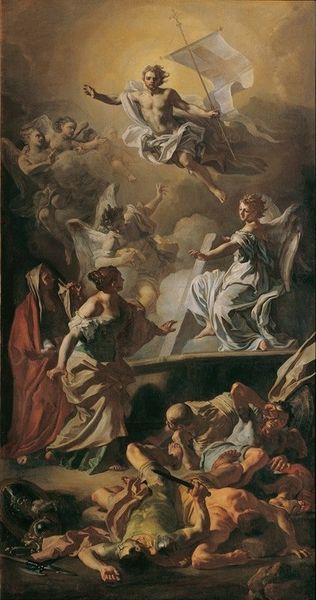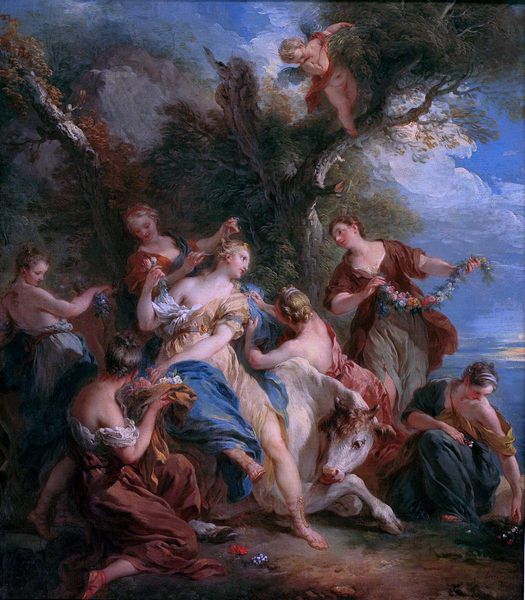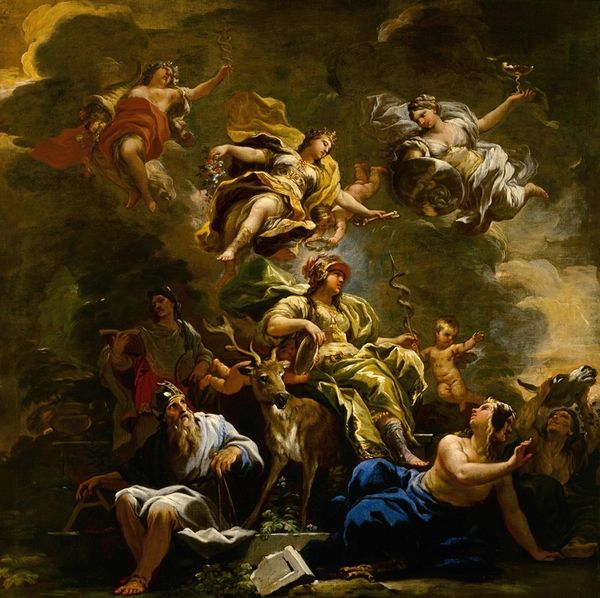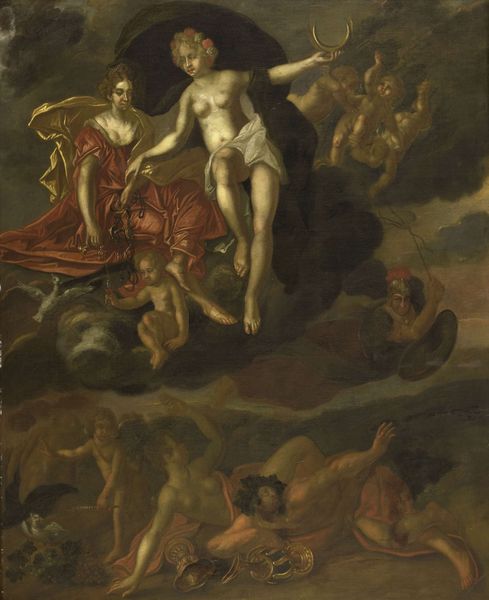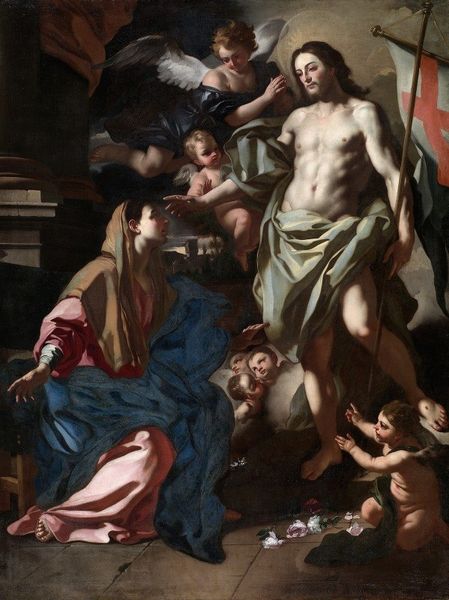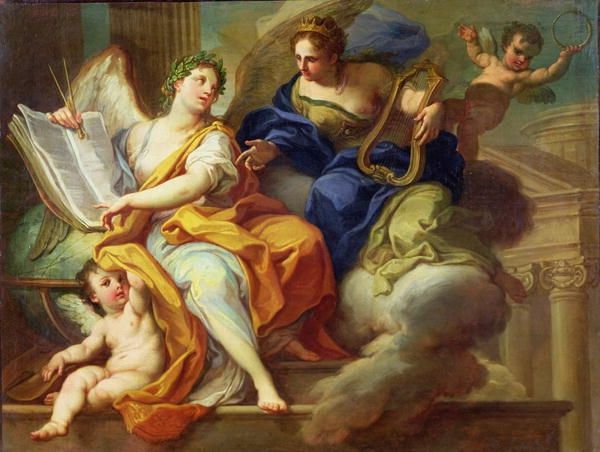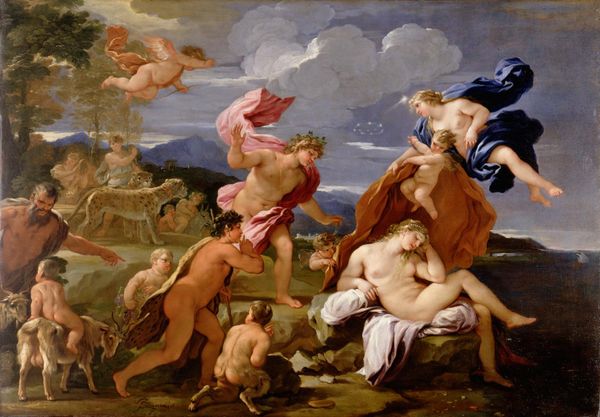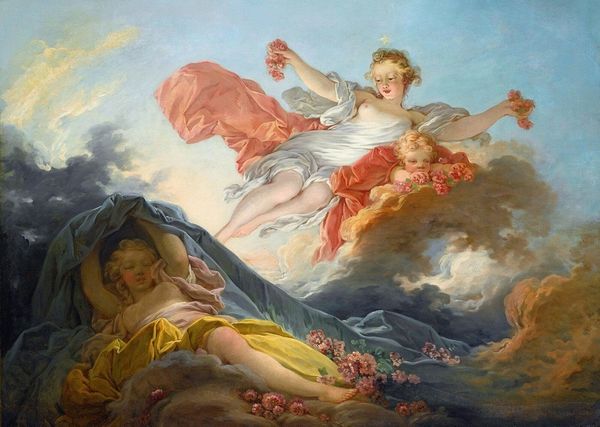
painting, oil-paint
#
allegory
#
baroque
#
painting
#
oil-paint
#
figuration
#
oil painting
#
mythology
#
genre-painting
#
history-painting
Copyright: Public Domain: Artvee
Editor: This is Francesco Solimena's "Aurora Taking Leave of Tithonus," painted in 1704 using oil on canvas. I’m struck by the dynamism of the scene, the figures seem caught in a whirlwind of emotions and movement. How do you interpret this work? Curator: Solimena masterfully employs visual language in this Baroque piece. Note the contrast between the youthful Aurora and the aged Tithonus. This opposition represents a profound meditation on mortality and immortality. Consider the torch held aloft, traditionally a symbol of enlightenment or truth. Yet here, it seems to represent the dawn, signaling Aurora's departure. Editor: So the torch doesn't represent hope, but rather, the inevitable passage of time and the end of their night together? Curator: Precisely. And what of the cherubs? They aren't simply decorative. The one crowning Aurora could symbolize the fleeting beauty and glory of youth, while the others seem to tug her away, representing the inescapable duty to bring forth the day. Editor: That makes the expression on Tithonus' face so much more poignant. He isn’t just sad, he seems resigned. Curator: Indeed. Think about what it means to be granted immortality but not eternal youth, to witness beauty and vigor depart while you remain, unchanged, aging but never dying. This imagery explores a timeless theme—the bittersweet nature of existence and the melancholic knowledge of impermanence. It serves as a constant memento mori for the viewer. Editor: I see now how the artist used recognizable characters to make a really strong statement about the human condition! Curator: Solimena prompts us to recognize ourselves in the drama—the bittersweet ache of wanting to hold onto something that is destined to slip away.
Comments
No comments
Be the first to comment and join the conversation on the ultimate creative platform.


